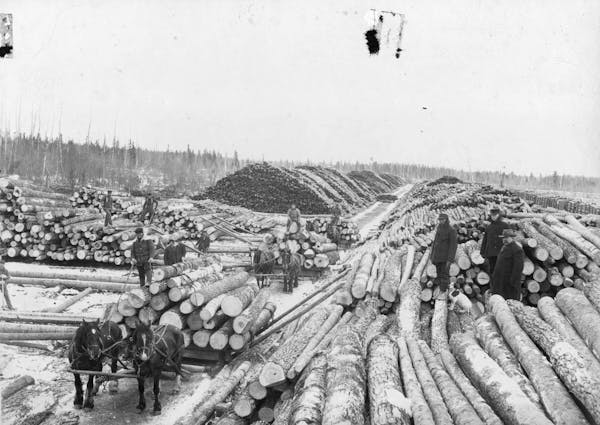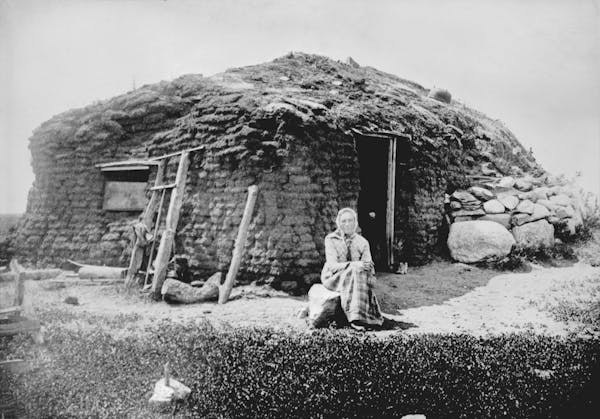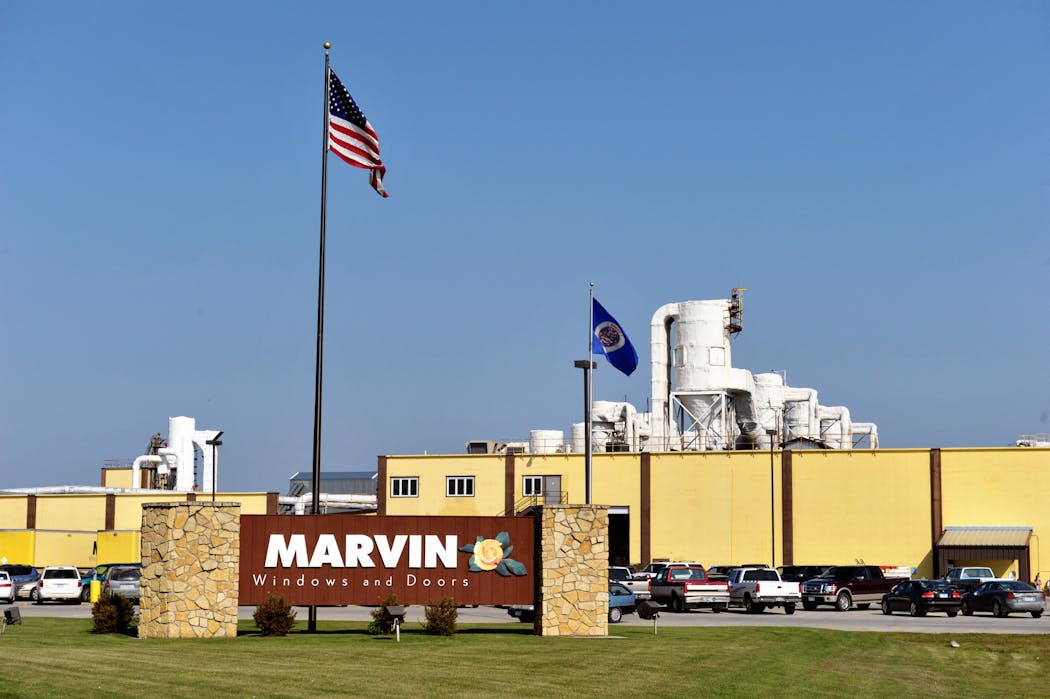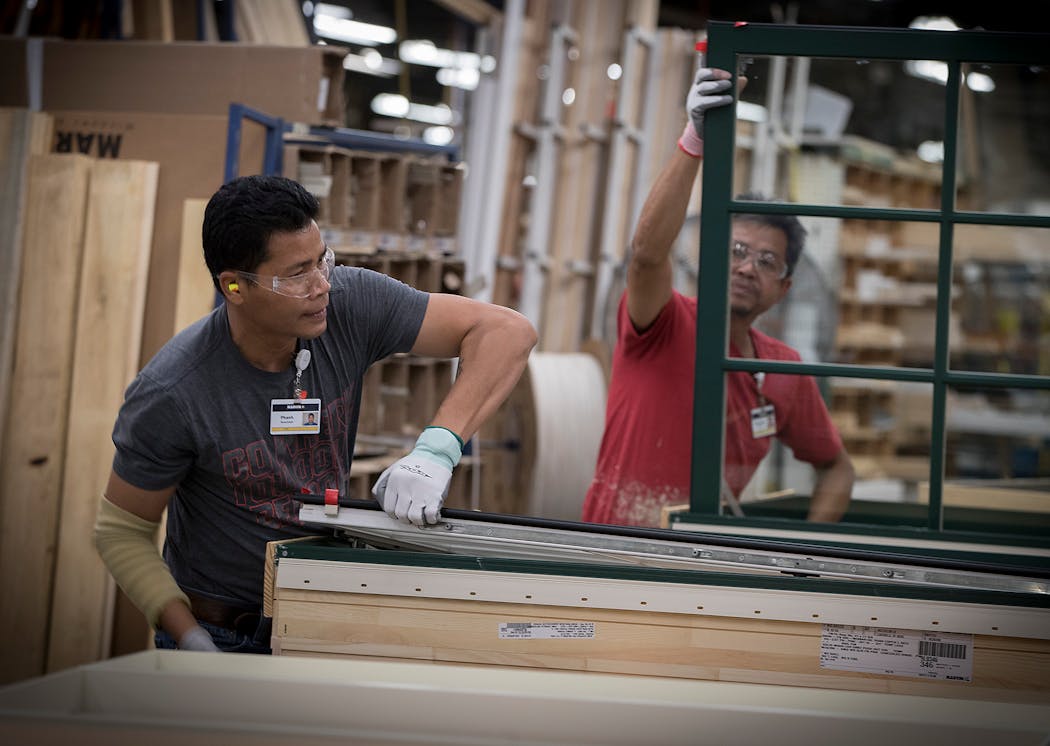How did Minnesota become a window manufacturing hub?
Listen and subscribe to our podcast: Via Apple Podcasts | Spotify | Stitcher
Minnesota is home to some of the largest window and door manufacturers in North America.
Bayport-based Andersen Windows & Doors and Warroad-based Marvin are among the most well-known brands in their industry. And they aren't the state's only large companies making windows and doors.
Other window and door companies in Minnesota include Lindsay Window & Door in North Mankato; Hayfield Window & Door in Hayfield; and Vector Windows & Doors in Fergus Falls.
In fact, Minnesota has the second-highest concentration of window and door manufacturing jobs in the U.S. behind Iowa, with over six times the national average, according to U.S. Bureau of Labor Statistics data analyzed by the Minnesota Chamber of Commerce.
Reader Erik Holmstrom, who lives in Roseau, less than 25 miles from Warroad, wanted to know how Minnesota became a hub for this industry. Holmstrom moved to Roseau about a year ago and was surprised at the immensity of Marvin's Warroad manufacturing plant. He sought answers from Curious Minnesota, the Star Tribune's reader-powered reporting project.
The answer is in part due to the plentiful white pine trees that made Minnesota a leading lumber market in the early 1900s.
Origins in logging timber
Logging timber was a large industry in America during the late 1800s and early 1900s. But the tall harvestable pine forests of the northeast were being depleted, so lumbering moved to Minnesota, said Phil Donaldson, executive vice president and chief financial officer at Andersen Corp.
Minnesota became a leading lumber hub because of its extensive forests of white pine trees, which were very desirable for homebuilding, Donaldson said. Rivers, including the Mississippi, allowed logs to be floated to sawmills, where they could be processed and shipped to markets around the country.
In 1903, Hans Andersen, a Danish immigrant, started the Andersen Lumber Co. in Hudson, Wis. The company moved its office to the Stillwater area years later.
As a direct impact of the industrial revolution, Minnesota lumber companies like Andersen sought machinery to turn their timber into engineered wood that could support the construction of more homes, schools, ships, boats and stores. This resulted in production facilities that could make more wood-based items repeatedly, more efficiently and at a faster pace.
It was about a decade after the company's founding that Andersen opened its first manufacturing facility in Bayport, which remains its largest factory.
"What you have happening in the early 1890s is the geographic front line of the timber industry crossed into Minnesota and at the same time, the Industrial Revolution was coming up," Donaldson said.
Two years after starting the company, in 1905, Andersen originated the two bundle method, allowing windows to be assembled onsite in less than 10 minutes. In 1932, the company's master casement window became the first completely assembled window unit in the industry.
This period also led to the creation of more glass companies in Minnesota, which currently has the ninth-largest concentration of jobs for that specific industry in the U.S., according to the Minnesota Chamber of Commerce. Andersen does not make its own glass, but has sourced its glass from Eden Prairie-based Cardinal Glass Industries for the last 50 years, Donaldson said.
By the early 1950s, new products allowed Andersen to double its employee count from 500 to 1,000. Today, almost half the company's 13,000 employees work in Minnesota, Donaldson said.
Marvin's post-war expansion
Marvin's transition from lumberyard to window manufacturer occurred several decades later, in the 1940s.
In 1904, George G. Marvin came to Warroad to manage a grain elevator and lumberyard for the Canadian Elevator Co. When the firm relocated, Marvin stayed in Warroad and founded the Marvin Lumber and Cedar Co.
In 1939, George Marvin called his son home from working at General Mills to help with the family's lumber and cedar company.
William Marvin saw an opportunity to expand the business with woodworking machinery, but he also felt responsibility to grow the company "because he was afraid his friends and community members wouldn't come home after [World War II] if there wasn't work," said Christine Marvin, the company's chief marketing and experience officer and William Marvin's granddaughter.
"That's what drove and motivated him at the time, to provide work so people would come home," she said. "We just so happened to make windows and doors."
During the war, in addition to windows, Marvin manufactured ammunition boxes, life vests and even had a contract with Campbell's Soup Co., Marvin said.
At end of World War II, Marvin was the major employer in Warroad, Marvin said.
Today, Marvin has more than 7,000 employees across 16 cities throughout North America, with about 2,000 people working in the headquarters and manufacturing facility in Warroad, Marvin said.
A major employer
Marvin and Andersen employ about 20,000 people combined, and each company generates more than a $1 billion in annual revenue, according to Window + Door, a publication by the National Glass Association.
In general, the Midwest is a hub for window and door making. The other familiar window and door brand in the region is Pella Corp., based in Pella, Iowa. Wisconsin is home to Kolbe & Kolbe Millwork Co. and Weather Shield Manufacturing.
Window and door manufacturing in Minnesota employs 6,915 people across 48 employers, according to the Minnesota Department of Employment and Economic Development. The average salary for workers at those firms was over $86,600 last year.
In Minnesota alone, these industries contributed about $929 million in gross regional product output in 2021. Minnesota ranked 14th among U.S. states in window-related exports.
In 1961, Marvin's factory in Warroad was destroyed in a fire. Many cities outside Minnesota offered the family attractive incentives to move, but they declined and rebuilt in Warroad instead.
"It was always, 'This is home' and we're going to rebuild it," Marvin said.
If you'd like to submit a Curious Minnesota question, fill out the form below:
Read more Curious Minnesota stories:
What are Minnesota's most exported products?
Why do so many Fortune 500 companies call Minnesota home?
Why doesn't Minnesota charge a sales tax on clothing?
The Jolly Green Giant has moved on from Minnesota. So who is maintaining his iconic billboard?
Why is Minnesota a national leader in its share of women who work?
Is Minnesota really one of the nation's top sugar producers?







